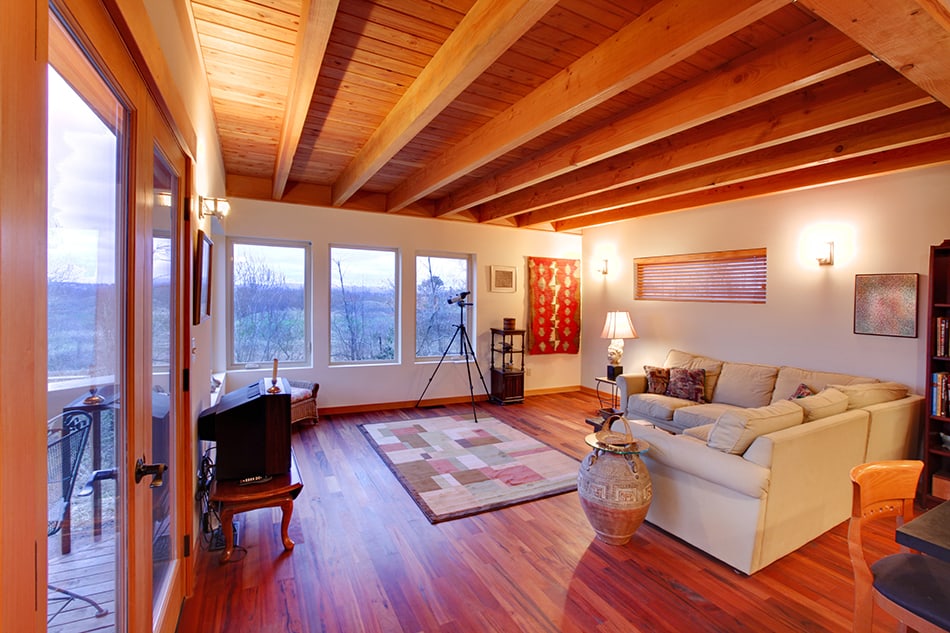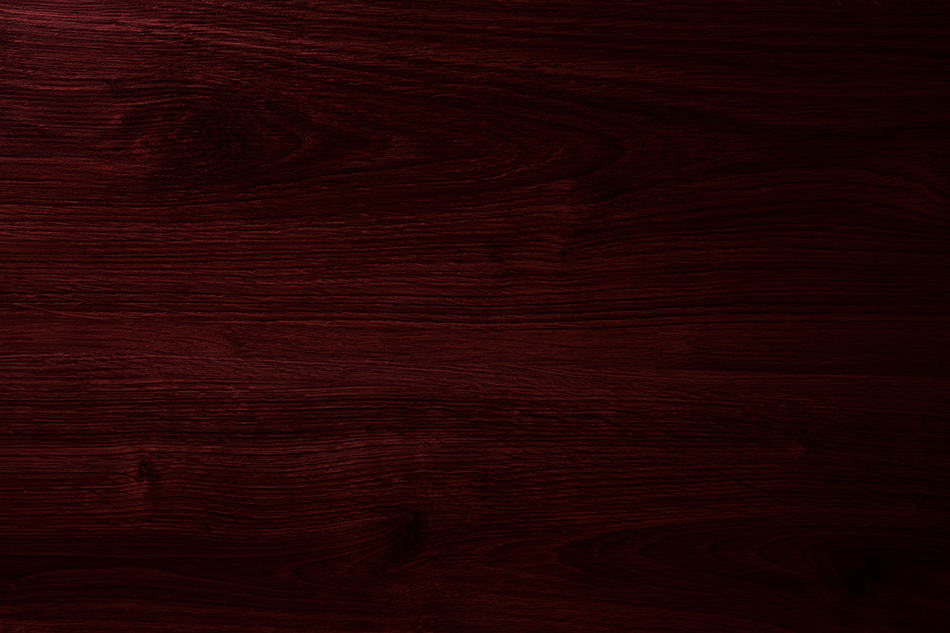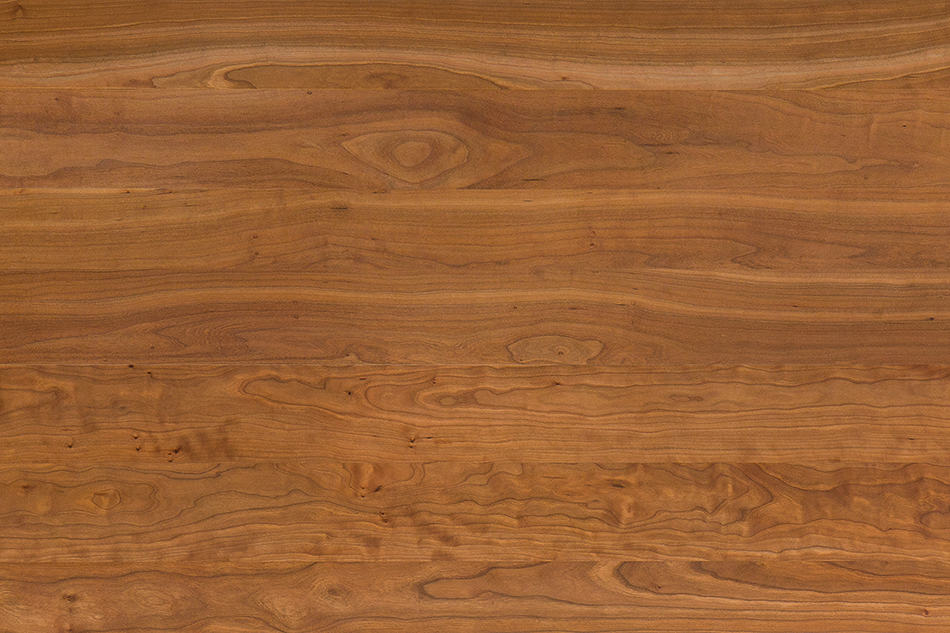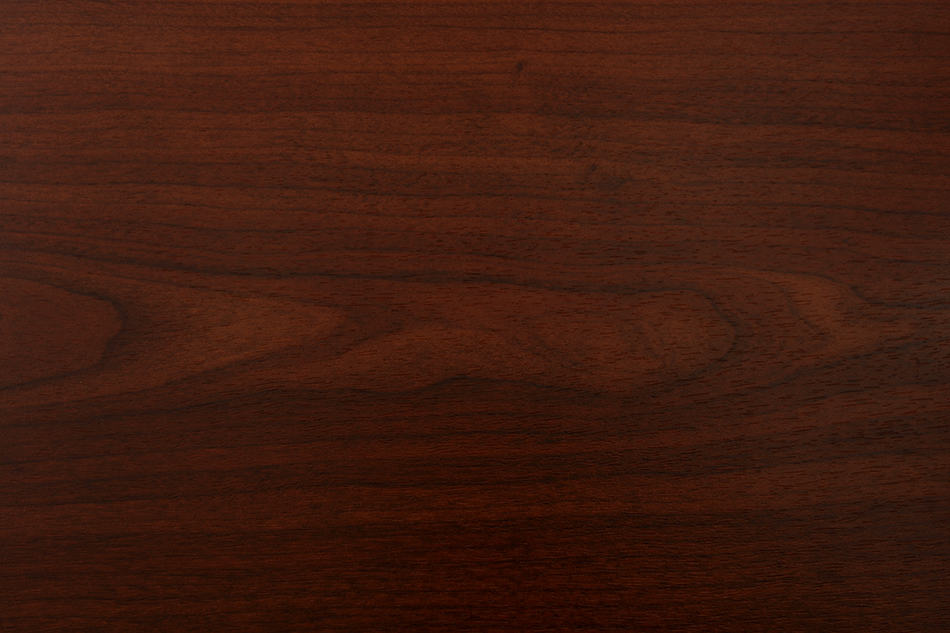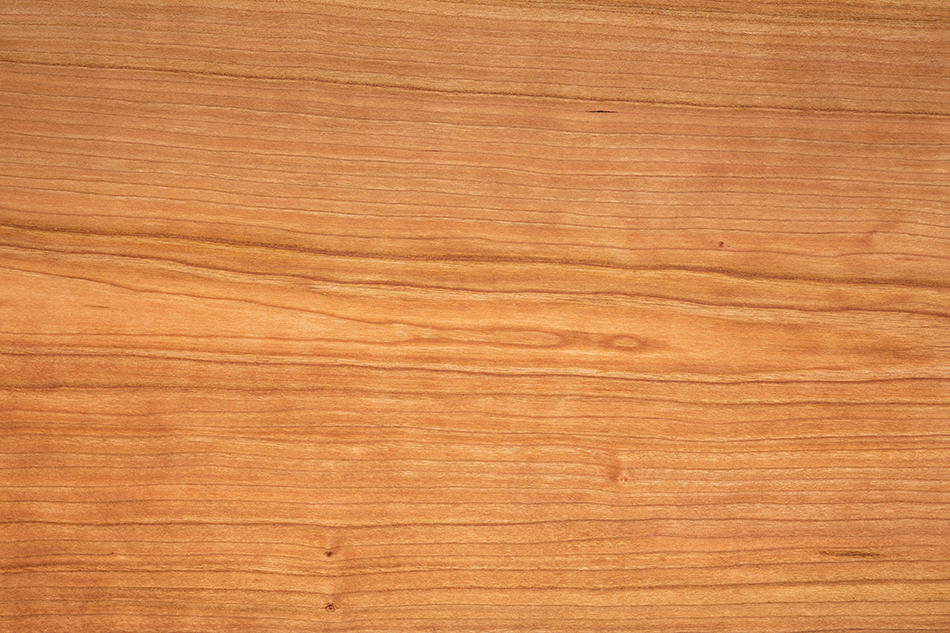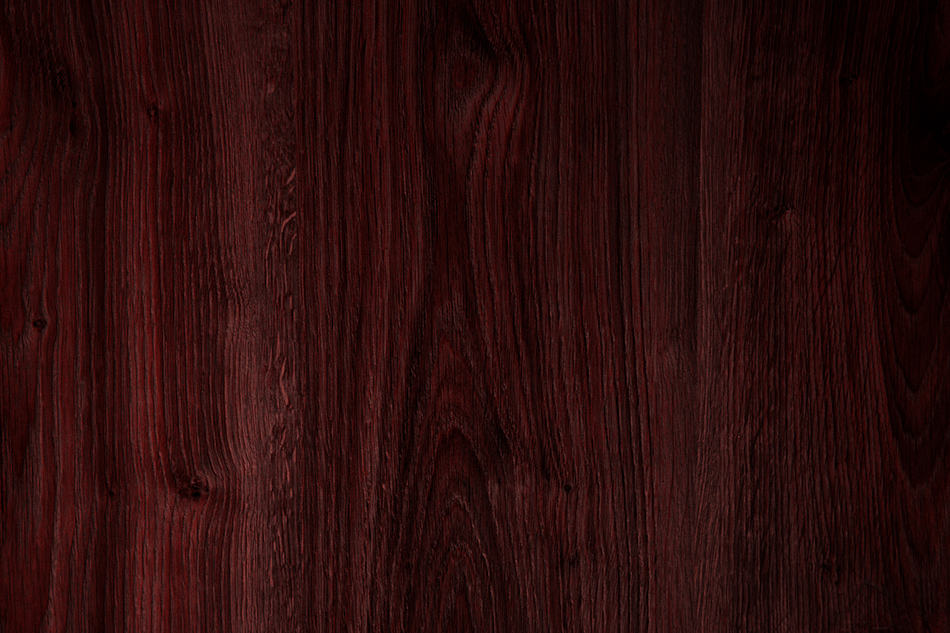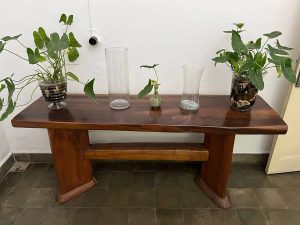Cherry wood is a popular type of hardwood commonly used in furniture, cabinets, and floorings. It is also used for doors, carvings, veneers, joineries, musical instruments, and moldings. It is highly valued because it’s beautiful, durable, and easy to work with. It also grows richer and darker with age.
Cherry trees can grow up to 100 feet and live up to 100 years. The wood from the tree possesses fine and straight grain that ranges from blond to reddish-brown. In terms of aesthetics, the wood has a reddish-brown and golden hue appearance. Over time, oxidation causes it to turn rich brown-red.
Cherry wood is well noted for its superior workability and durability. Its heart, for one, is highly resistant to rotting and decay. It’s also moderately strong, and capable of resisting shock loads. And due to its flexibility, cherry wood can be easily cut, carved, and molded for different applications.
There are two main varieties of cherry wood– black cherry and sweet cherry.
Black Cherry
The black cherry is so popular that it is known by many names. Aside from American Cherry, it is also called whiskey cherry, wild cherry chokecherry, and rum cherry. Its scientific name is “Prunus Serotina.” The tree from where it comes from, black cherry wood, is widely found in Northern America. The eastern coast of the United States produces the largest number of cherry wood in the country.
The color of the black cherry heartwood varies. A recently cut heartwood can be described as colored light pinkish brown. Over time and especially when exposed to light, it darkens to medium reddish-brown. On the other hand, its sapwood is pale yellow.
The wood grain of black cherry is easy to work with because it’s smooth and straight. It’s not surprising that furniture makers love to harness it for furniture. But some figured pieces of black cherry have a curly grain pattern, making them harder to work with.
Black cherry occasionally has gum or mineral deposit. It’s not visible to the bare eye, which makes it advantageous to owners. Over time, the mineral deposits in the wood would give the furniture a unique and attractive grain.
Another reason why black cherry wood is popular among furniture makers is its durability. It’s highly resistant to decay. These attributes make it ideal for use in furniture and cabinets. After all, who wants to invest in wood that would decay eventually after years of use?
In terms of workability, black cherry wood gets good grades, too. Black cherry wood is one of the best for workability and also explains why manufacturers love investing in it. This wood machines well with its grain turning straight and stable. Arguably the only hard part is staining the wood because there’s the risk of producing blotchy results. It is recommended that before staining the wood, a gel-based stain is applied first.
Black cherry wood has a distinctive, mild smell when it is being worked on. If you have respiratory problems, then you should never be around black cherry wood being worked on as sawdust from the wood can be harmful. It can cause wheezing and coughing.
In terms of price, black cherry wood is comparable with that of walnut. It’s slightly
more expensive than other popular hardwoods like maple or oak woods. One reason it’s affordable is that the tree is not listed in the list of threatened species.
As such, black cherry wood is commonly used in cabinets and furniture. It is also used in paneling, carving, and flooring. It is also an ideal material for musical instruments, tobacco pipes, and burial caskets.
Sweet Cherry Wood
Sweet cherry wood is also called European cherry wood. The tree is found in certain regions of Asia and Europe. With the scientific name of “Prunus Avium,” the tree can reach heights of up to 65 feet. Trunk diameter can grow up to 2 feet. It is smaller compared to its cousin, the black cherry tree.
Yet despite being smaller, sweet cherry wood is far more durable than black cherry wood. It is arguably one of the most durable woods in the market, capable of withstanding wear and tear for many years.
Another difference between the two types of cherry wood is the color. Sweet cherry wood has more color contrasts than black cherry wood. It is also harder and more resilient compared to black cherry wood. Finally, it’s not as common as black cherry wood, which may affect its price, especially in Northern America.
When freshly cut, the heartwood of sweet cherry wood is colored light pink to brown. Eventually, it would develop into golden brown. Its sapwood is around 1 to 2 inches wide and colored pale yellow.
Like most types of cherry wood, sweet cherry wood is reliable, beautiful, and durable. It ages well and would look well on floors, furniture, and boats.
Its texture ranges from fine to medium with a close grain, usually complete straight or slightly wavy. Its end-grain is semi-ring porous with small pores sans the precise arrangement. It has two to three radials, too, with distinctive growth rings.
Like the black cherry, sweet cherry wood has lots of mineral and gum deposits. Many manufacturers and buyers, though, prefer this as it can make the wood look more unique. This is important for those who want to sell the wood at a high price.
Although it’s not listed in the International Union for Conservation of Nature (IUCN) Red List of Threatened Species nor the CITES Appendices, sweet cherry wood is not as widely available as black cherry wood. As mentioned earlier, it’s only found in certain regions of Asia and Europe. This contributes to the relatively high price of sweet cherry wood. Also, the wood is sold only in small sizes, proof of how expensive and difficult it is to obtain. Even in regions where it grows naturally, sweet cherry wood prices are moderately high.
Sweet cherry wood is moderately durable when it comes to decay resistance. It’s not as resistant to insect attacks the way black cherry wood is, which makes the latter more popular among furniture manufacturers.
How about the workability of sweet cherry wood? Similar to black cherry wood, sweet cherry wood is easy to work with both machines and hands. This is also yet another reason why sweet cherry wood is preferred by many manufacturers. However, it is also known that some manufacturers encounter difficulties when staining the wood. There’s the risk that staining can lead to blotchy results due to the closed, fine grain of sweet cherry wood.
As such, the use of gel stains and sanding sealers before staining is highly recommended. It is also common for manufacturers to use glues, finishes, and turns during the staining process to prevent blotches from occurring.
Another advantage of sweet cherry wood is that it has no odor when it is being worked on, not like black cherry wood. Therefore, it won’t cause respiratory problems and health concerns.
Apart from black cherry and sweet cherry wood, there are other four types of cherry wood that you should be aware of: Brazilian cherry, Patagonian cherry, Caribbean cherry, and Chilean cherry.
Brazilian Cherry
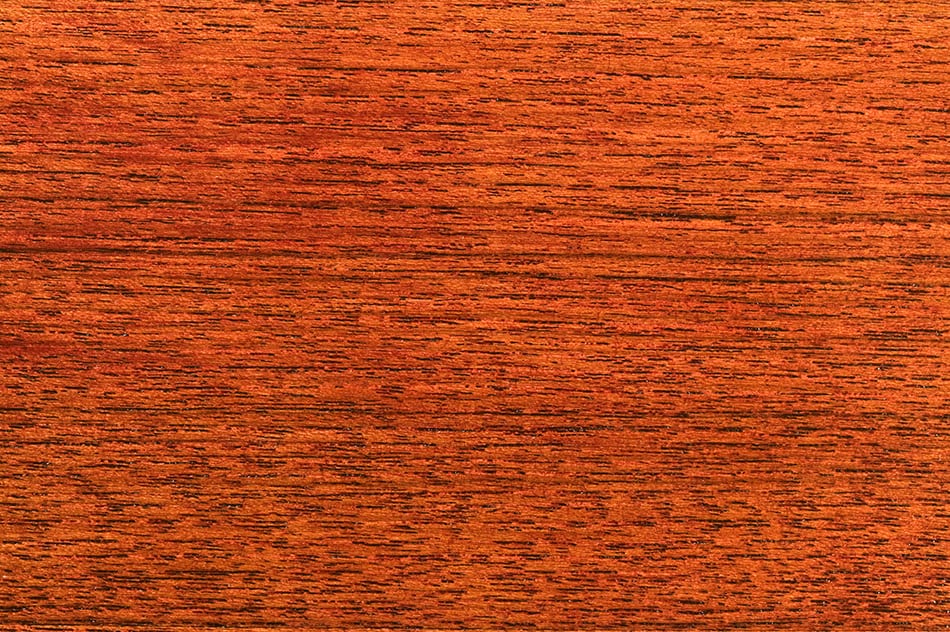
Technically speaking, Brazilian cherry isn’t cherry wood. Instead, it’s from a tree called Jatoba with the scientific name of Hymenaea Courbaril. The tree was first known for its fruit rather than its wood. However, the wood was exported to the United States decades ago and labeled as an exotic and durable flooring style. This was the start of the term “Brazilian Cherry,” although it’s technically part of the legume family.
If there’s one similarity that Brazilian cherry has with the real cherry, then it has to be its color. Its natural color is very similar to the strained color of the black cherry.
The tree from where this wood is derived grows in parts of Southern and Central America, particularly in Mexico. It grows up to a height of 130 feet, with its trunk growing up to 4 feet in diameter. It is exceptionally stiff, strong, and hard. With its affordable price, it is not easy to understand why the tree became such popular building material.
As a house flooring material, Brazilian cherry is well-accepted because of its color. Its color ranges from orange-brown to dark reddish-brown. It can add a rich hue to any room and make it look warmer and more inviting. The color would eventually darken with constant exposure to light.
Brazilian cherry is also very durable and hard compared with most woods. It’s a great choice if you live with pets and children as the wood can resist scratches and spills. Compared to other traditional wood flooring styles, Brazilian cherry is also easy to clean and maintain. It also doesn’t emit a foul smell which makes it ideal for people who have allergies and respiratory problems.
Of course, Brazilian cherry wood has its weaknesses. As mentioned earlier, its color will darken when exposed to light. Brazilian cherry wood’s sensitivity to light means it will darken over time regardless of its color. You might have to think about blocking light in your room or rotating rugs if you don’t want your Brazilian cherry flooring to darken rather easily.
Brazilian cherry wood has two styles- solid and engineered wood. The former is the more durable option. It has a longer life span and can be refinished or sanded multiple times. Installing solid Brazilian cherry wood flooring can increase the overall value of your home.
On the other hand, engineered Brazilian cherry wood is made in layers. It commonly has a wood veneer on top, which may be too thin or a bit thick, depending on the product’s quality.
Engineered Brazilian cherry wood is a lot cheaper compared to solid Brazilian cherry wood. This style of Brazilian cherry wood is also easier to install. In comparison, solid Brazilian cherry wood is commonly installed by pros. Engineered Brazilian cherry wood is also more versatile as it can be installed in rooms that get lots of moisture.
Patagonian Cherry
Patagonian cherry is more popularly known as Tiete Rosewood due to its rose family origins. Widely found in South America, its scientific name is Guibourtia hymenaeifolia. It is noted for its orange to pinkish brown color that tends to redden with age. Patagonian cherry wood is commonly used in interior floors as well as other small specialty wood items.
The Patagonian cherry tree can grow large up to 165 feet in height, with its trunk diameter growing up to 6 feet. In terms of hardness, it has a Janka hardness rating of 2,790 pounds, making it difficult to work with. Janka test is the industry-wide standard for measuring the hardness of wood and describes the ability of a wood species to withstand wear and tear.
One of the best attributes of the wood is its uniform appearance and color. It is generally light orange to pinkish-brown, with the color eventually reddening and darkening with age. The wood also has a straight and bland pattern. The uniform color and appearance of Patagonian cherry wood make it ideal for use in interior floors. It’s also widely used in turned objects aside from other small specialty wood items.
Since Patagonian cherry wood is hard and durable, it’s also dense and difficult to work with. The wood tends to strain machines and tools because of those qualities.
The silica content of the wood likewise prematurely affects the cutting quality of machines and tools. It’s not an exaggeration to say that Patagonian cherry is not a favorite of manufacturers because of its poor workability. It can be argued that the uniform and straight grain of the wood is its saving grace. Also, the mild scent it emits when worked on diminishes the poor workability and reputation of this wood.
Despite those disadvantages, the Patagonian cherry wood is reasonably priced. It’s an inexpensive option for interior flooring, costing around $5 per square foot.
Caribbean Cherry
Commonly found in the Caribbean region, particularly in Belize and Guatemala, the Caribbean Cherry is a tough, open-pored, and dense reddish hardwood. It is also called by other names like Mayan/Aztec Cherry and Black Cabbage Bark. It is typically used in flooring, furniture, decking, and heavy construction.
One of the prime qualities or characteristics of Caribbean cherry is its hardness. It has a Janka test rating of 3,100 pounds. This is quite surprising because the tree isn’t as imposing as other trees, growing up to 100 feet tall and with a trunk diameter of just 2 feet. Because of this attribute, the Caribbean cherry wood can be very difficult to work with. It’s notorious for causing strain on machines and dulling cutters.
In terms of colors, wood is available in a wide range of colors. These include yellow, tan, brown-red, and deep red. It should be noted that the color of Caribbean cherry may vary depending on the soil and climate where the tree was planted or grown in. Over time and with exposure to light, the color may darken.
Because of its high Janka rating test, Caribbean cherry wood isn’t as popular as other cherry wood types. Many workers and manufacturers actively avoid it because of its poor workability. This contributes to the relatively high price of the wood.
Chilean Cherry
Last but not least is the Chilean Cherry or the Nothofagus dombeyi. Like the Patagonian cherry, the tree from which the wood is derived isn’t part of the cherry family. Instead, it is part of the Beech tree family. Coigue is its common lumber name and originates from the regions of Chile and Argentina.
This wood has fine and lustrous grains. Its color ranges from pale pinks to light tans, although you can find Chilean cherry wood that’s colored gray or cream. The wood tends to darken with color over time.
Another good quality of this wood is its low Janka Hardness rating of 990 pounds. Unlike the Caribbean cherry, it is relatively soft and thus won’t cause too much stress on tools and machines. It can also be easily molded into various shapes and stains.
However, Chilean cherry wood is not widely available due to the limited tree population. The wood is restricted to residential use only. This explains why Chilean cherry wood is one of the more expensive woods in the market today.
Conclusion
To sum up, there are two major types of cherry wood—black cherry wood and sweet cherry wood. These are the more widely available cherry wood types often used for floorings, furniture, and cabinets.
The four other types—Brazilian, Caribbean, Patagonian, and Chilean—aren’t derived from the cherry tree but from other trees. However, their trade names have been associated with cherry wood which has made these woods marketed as cherry wood types.
